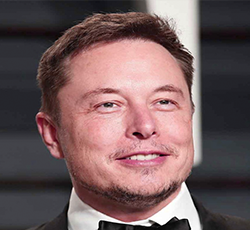
Tesla Is Cooked. And It's All Xiaomi’s Fault - InsideEVs
- by Inside EVs
- Jul 01, 2025
- 0 Comments
- 0 Likes Flag 0 Of 5

Comment
It was 9:48 p.m. in Beijing, just outside the New China International Exhibition Center. Throngs of people stood around in circles, furiously refreshing their phones on Xiaomi’s website.
The air was still electric. Xiaomi’s new product press conference—full of news about vacuum cleaners, air conditioners, smartphones and tablets—ended about ten minutes ago. Now, everyone waited to pull the trigger on the most exciting thing debuting at the event: Xiaomi’s new electric car.
Everyone already knew the Xiaomi YU7: a sleek, Ferrari-esque crossover, would be aimed right at the Tesla Model Y. But Xiaomi CEO Lei Jun just announced it would undercut even the Chinese-made Tesla by a sizable margin.
Given the wild success of the SU7 sedan, it was a no-brainer that the YU7 would likely see similar numbers. Everyone stood ready to plunk down about $700 to reserve it when the online portal opened up at 10:00 p.m..
Photo by: Kevin Williams/InsideEVs
By 10:03 PM, Xiaomi had received 200,000 orders. Xiaomi claims it received 289,000 orders within an hour of reservations opening, with 240,000 of them locking in as confirmed buyers. In a mere 60 minutes, the YU7 was essentially sold out until 2027.
And judging from what I’ve experienced behind the wheel of the YU7 on Chinese roads, Chinese buyers are in for a real treat. Everyone else, though, whether Chinese domestic or foreign imports, might be cooked. More so than usual.
(Full Disclosure: Xiaomi covered my travel from Ohio to Beijing to drive the YU7, and tour its headquarters and factory.)
Xiaomi YU7 Source: Kevin Williams/InsideEVs
Xiaomi is a very young company, starting in 2010 and launching its first phone in 2011. From there, Xiaomi expanded outward into the mid-tier and budget handset market, offering iPhone-like features, competitive technical specifications, and its own self-developed user experience for prices that were a lot more reasonable to consumers' pocketbooks.
From the Mi 1 in 2011, Xiaomi expanded outward to phones above and below the Mi 1—all with the same idea—to offer competitive specs, solid build quality, its own UI, all for something more reasonably priced than established brands like Apple, LG or Samsung.
Eventually, this ethos was expanded outward toward other tech devices, from tablets, smart watches, and televisions, but even now washing machines, vacuum cleaners and air conditioning units.
Photo by: Photo by Kevin Williams/InsideEVs
And now, cars.
When taken in the context of how Xiaomi’s phone business achieved success, the SU7 (and now YU7) don’t really stray from the formula that made its handsets so popular: strong features in an attractive wrapper, sold for a reasonable price.
I mean, you can tell just by looking at the chassis and platform that comprise its cars.
Photo by: Kevin Williams/InsideEVs
The SU7 and YU7 use the same self-developed Modena platform (an ambitious name if there ever was one), but from what I can see, to my untrained eye, Xiaomi isn’t exactly reinventing the wheel here.
Of course, there are some interesting design decisions and self-developed innovations, like the upside-down mounted battery cells that, in theory, would channel any thermal runaway event downward to the street, rather than upward toward the passengers. Yet, by and large, the Modena architecture looks like it simply takes top-of-the-line, modern design trends in car building, but ruthlessly optimized and streamlined to make it cheaper.
The SU7 and YU7 have megacasting with chassis pieces. Xiaomi calls it Hypercasting, Tesla calls it Gigacasting; it’s all basically the same concept, brand name be damned. The whole rear floor is megacast, while the front also has partially megacast pieces—all right in line with what we’ve seen from Honda, Tesla, Zeekr and possibly Toyota in the near future.
Photo by: Kevin Williams/InsideEVs
Xiaomi says its rear crash bar and trunk portal can lop off crash damage in an accident, and allow for easier repair than a single-piece big design. The car is also a cell-to-body design, where the top of the battery’s case is actually part of the vehicle’s structure, rather than a box of cells bolted to the bottom of the vehicle. None of this is new tech—these are technologies that practically any manufacturer serious about making electric cars would implement.
But, in theory, Xiaomi’s trying to make them all a little cheaper and easier to make. For starters, Xiaomi is vertically integrated; aside from the battery cells, Brembo brake upgrade and air suspension units, there’s very little on the SU7 and YU7 that isn’t developed by the brand itself.
This approach, pioneered by Tesla, should keep the brand agile and speedy, shaving precious time and money spent that would have been tied up with negotiating and navigating with an automotive supplier. Even its electric motors are done in-house. That’s an edge over Western and other Asian automakers that depend heavily on vast networks of suppliers for nearly everything, and don’t get much in the way of speed and control.
Photo by: Kevin Williams/InsideEVs
The behind-the-scenes stuff is likely meaningless to the end consumer. To the average person, they just like the product and the branding. They're getting a good product, by a good brand, run by someone who is likable. It’s all reminiscent of the Steve Jobs-era Apple or Tesla in the earliest days, but arguably with a line of products that can reach a much, much wider subset of customers.
I don’t see Apple or Ford selling anything that approaches the utility of a $65 phone, that’s for sure.
Xiaomi YU7: Early Review And First Drive Impressions
I had less time behind the wheel of the YU7 than I would have liked. I rode in the YU7 as a passenger for about two hours on varying roads, but unfortunately, my time behind the wheel was limited to about 45 minutes on somewhat closed roads in a resort.
Still, this was more than enough to form an impression of the YU7. I drove the car in relatively slow neighborhood-style streets, but also a speedy and curvy mountain road that really let me conceptualize the car’s limits.
Photo by: Kevin Williams/InsideEVs
In short, the YU7 is fantastic; it’s very hard to believe that this is merely the brand’s second attempt at car making. Every EV I’ve driven from a startup has very obviously felt like it’s a first attempt at car building, with design decisions, materials and build quality that feel like a homespun concept kit car, rather than a series production car made by a large corporation.
But I digress. There’s very little to fault with the Xiaomi YU7’s driving dynamics.
Like practically every EV on the planet, the YU7 is fast. Of course, it damn well should be, with a whopping 680 horsepower going to the ground via Xiaomi’s self-developed V6s electric motors. That alone is way more than your garden-variety Model Y.
However, the YU7’s chassis, ride and suspension are the real stars here. They all work together so well to make probably the most well-resolved Chinese car I’ve ever experienced. And this isn’t me putting a “good for a Chinese car” caveat, as if the brand isn’t up to par with Western brands.
Photo by: Kevin Williams/InsideEVs
Please first to comment
Related Post
Stay Connected
Tweets by elonmuskTo get the latest tweets please make sure you are logged in on X on this browser.
Sponsored
Popular Post
Sam Altman's OpenAI Takes On Elon Musk's Grok in AI Chess Tournament Final - Who Won?
28 ViewsAug 09 ,2025






 Energy
Energy


















